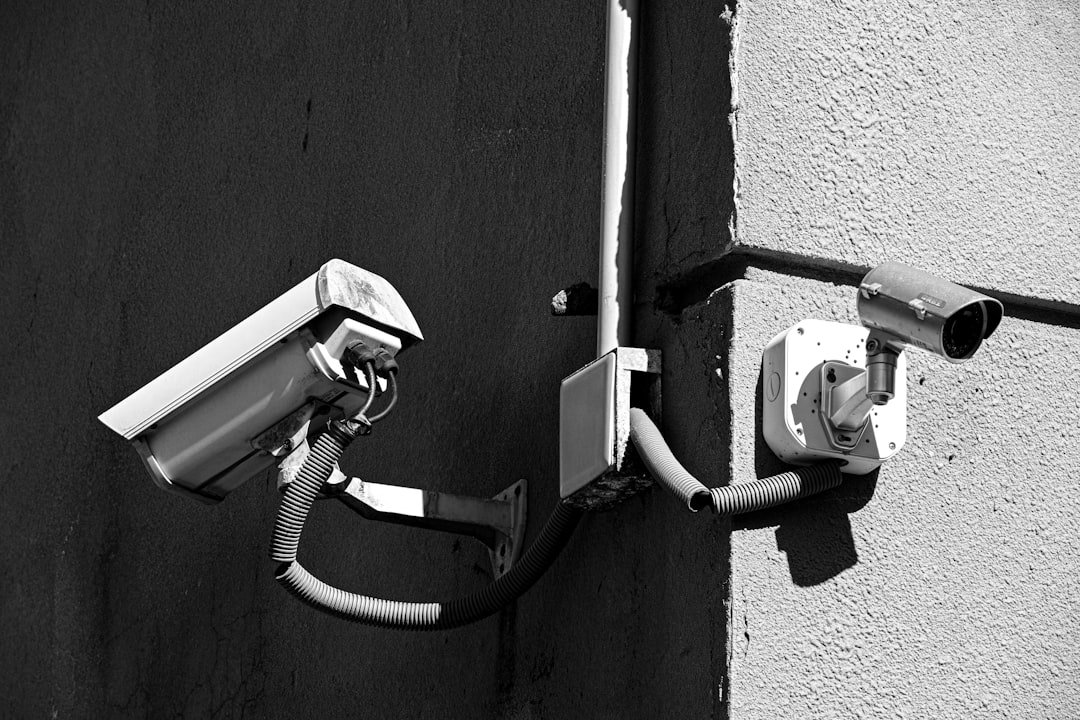Are Home Security Systems Worth It? Understanding Security System Benefits
In an era where safety concerns are on the rise,

In today’s world, security systems play a crucial role in protecting our homes, businesses, and public spaces. These systems are designed to detect and deter potential threats, providing us with peace of mind and a sense of safety. With advancements in technology, security systems have become more sophisticated and capable than ever before.
There are several types of security systems available, each with its own set of capabilities. The most common types include burglar alarms, surveillance cameras, access control systems, and fire detection systems. Burglar alarms are designed to detect unauthorized entry into a property and alert the owner or authorities. Surveillance cameras capture video footage of an area, allowing for real-time monitoring and recording of events. Access control systems restrict entry to a building or area based on authorized credentials. Fire detection systems detect the presence of smoke or fire and trigger an alarm to alert occupants.
Security systems consist of various components that work together to provide comprehensive protection. These components include sensors, control panels, communication devices, and monitoring stations. Sensors are the backbone of security systems as they detect changes in the environment and trigger appropriate responses.
There are different types of sensors used in security systems, including motion sensors, door/window sensors, glass break sensors, and smoke detectors. Motion sensors use infrared technology to detect movement within a specified range. Door/window sensors are magnetic devices that trigger an alarm when a door or window is opened or closed. Glass break sensors detect the sound frequency of breaking glass and activate an alarm. Smoke detectors use optical or ionization technology to detect smoke particles in the air.
One of the key features of modern security systems is their ability to capture audio and video footage. This allows for real-time monitoring as well as recording for future reference. Cameras and microphones are the primary devices used to capture audio and video in security systems.
There are different types of cameras used in security systems, including analog cameras, digital cameras, and IP cameras. Analog cameras capture video footage and convert it into an analog signal that can be transmitted to a recording device. Digital cameras capture video footage and convert it into a digital signal that can be stored on a computer or network storage device. IP cameras are connected to a network and transmit video footage over the internet, allowing for remote monitoring and access.
Microphones are used to capture audio in security systems. There are different types of microphones available, including omnidirectional microphones, unidirectional microphones, and boundary microphones. Omnidirectional microphones capture sound from all directions, making them suitable for capturing audio in large areas. Unidirectional microphones capture sound from a specific direction, making them ideal for capturing audio in targeted areas. Boundary microphones are designed to be placed on surfaces such as walls or tables and capture sound reflections.
While the use of security systems is essential for protecting our homes and businesses, there are legal considerations that must be taken into account when it comes to audio recording. The laws and regulations surrounding audio recording vary from state to state and can also be subject to federal regulations.
In general, it is legal to record audio in public spaces where there is no expectation of privacy. However, recording audio in private spaces such as homes or offices without consent is generally prohibited. Some states require all parties involved in a conversation to consent to the recording, while others only require one party to consent.
It is important to familiarize yourself with the laws and regulations in your jurisdiction before installing audio recording devices as part of your security system. Failure to comply with these laws can result in legal consequences.
The use of audio recording in security systems raises privacy concerns and ethical considerations. While the intention behind using audio recording is to enhance security and deter potential threats, it can also infringe on individuals’ privacy rights.
Privacy concerns arise when audio recording devices capture conversations that were intended to be private. This can include personal conversations, confidential business discussions, or sensitive information being shared. Individuals have a reasonable expectation of privacy in certain settings, and the use of audio recording devices in these settings can be seen as an invasion of privacy.
Ethical considerations also come into play when using audio recording in security systems. It is important to strike a balance between the need for security and the respect for individuals’ privacy rights. This requires careful consideration of where and how audio recording devices are used, as well as ensuring that appropriate consent is obtained when necessary.
Audio data captured by security systems can be used for surveillance purposes to enhance security and provide valuable insights. Audio data can be analyzed to detect specific sounds or patterns that may indicate a potential threat or suspicious activity.
For example, audio analytics software can be used to detect the sound of breaking glass or loud noises that may indicate a break-in or vandalism. It can also be used to detect specific words or phrases that may indicate aggression or violence. By analyzing audio data in real-time, security systems can trigger appropriate responses such as sounding an alarm or notifying authorities.
However, there are drawbacks to using audio data for surveillance. Privacy concerns arise when conversations that were intended to be private are captured and analyzed. There is also the risk of false positives, where innocent conversations or sounds are mistaken for potential threats. It is important to carefully consider the benefits and drawbacks before implementing audio surveillance in security systems.
While security systems are capable of capturing audio recordings, there are limitations to their effectiveness in recording conversations. Factors such as distance, background noise, and the positioning of microphones can affect the quality and clarity of audio recordings.
Distance plays a significant role in the quality of audio recordings. The further away the sound source is from the microphone, the weaker the signal will be. This can result in low volume or distorted audio recordings, making it difficult to understand conversations.
Background noise can also interfere with the clarity of audio recordings. In environments with high levels of ambient noise, such as busy streets or crowded areas, it can be challenging to capture clear audio recordings. Background noise can drown out conversations, making it difficult to discern what is being said.
The positioning of microphones is crucial for capturing clear audio recordings. Microphones should be strategically placed to capture sound sources effectively and minimize background noise. Poor microphone placement can result in muffled or distorted audio recordings.
Artificial intelligence (AI) is playing an increasingly important role in security systems. AI algorithms can analyze large amounts of data, including audio and video footage, to detect patterns and anomalies that may indicate a potential threat.
AI-powered security systems can analyze audio data in real-time to detect specific sounds or words that may indicate aggression, violence, or other suspicious activities. By continuously learning from data, AI algorithms can improve their accuracy over time and reduce false positives.
However, there are drawbacks to using AI in security systems. Privacy concerns arise when AI algorithms analyze personal conversations or sensitive information. There is also the risk of bias in AI algorithms, as they are trained on historical data that may contain inherent biases. It is important to carefully consider the benefits and drawbacks before implementing AI in security systems.
To protect privacy while using security systems, there are several best practices that can be followed:
1. Clearly communicate the presence of audio recording devices: It is important to inform individuals that audio recording devices are in use. This can be done through signage or verbal communication.
2. Obtain consent when necessary: In jurisdictions where consent is required for audio recording, ensure that appropriate consent is obtained from all parties involved.
3. Limit the use of audio recording to public spaces: Avoid using audio recording devices in private spaces where individuals have a reasonable expectation of privacy.
4. Securely store and protect audio recordings: Take measures to ensure that audio recordings are securely stored and protected from unauthorized access.
5. Regularly review and update privacy policies: Keep privacy policies up to date and review them regularly to ensure compliance with applicable laws and regulations.
In conclusion, security systems play a crucial role in protecting our homes, businesses, and public spaces. They provide us with peace of mind and a sense of safety in an increasingly uncertain world. However, the use of audio recording in security systems raises legal considerations, privacy concerns, and ethical considerations.
It is important to strike a balance between the need for security and the respect for individuals’ privacy rights. This requires careful consideration of where and how audio recording devices are used, as well as ensuring that appropriate consent is obtained when necessary. By following best practices for protecting privacy in security systems, we can enhance security while respecting individuals’ privacy rights.
If you’re concerned about the privacy of your conversations when it comes to your home security system, you’ll want to check out this comprehensive guide to DIY home security systems from Home Security Superstore. This informative article covers everything you need to know about setting up your own system and addresses common concerns, such as whether or not the security system can hear conversations. To learn more about building peace of mind with a DIY home security system, visit Home Security Superstore’s comprehensive guide.
In an era where safety concerns are on the rise,

Home security systems are essential for protecting your home and

Security is a top priority for both homes and businesses.